Intel Expands 8th Gen Core: Core i9 on Mobile, Iris Plus, Desktop, Chipsets, and vPro
by Ian Cutress on April 3, 2018 3:01 AM ESTThe GIGABYTE H370N-WiFi
One of the motherboards we were sampled early was the GIGABYTE H370N-WiFi. This is GIGABYTE's latest mini-ITX motherboard, and in this case using the H370 chipset - traditionally GIGABYTE's H-series mini-ITX boards implement additional features, such as HDMI 2.0, and in this case, Wi-Fi.
The initial viewing of the board is one implemented more in function than overall style. The four-phase power delivery has a heatsink, the CPU is powered by an 8-pin 12V header, and the full length PCIe slot is shielded. GIGABYTE has two full-length DDR4 slots on this model, using double sided latches, and there are four SATA ports on the right hand side of the board out of a possible six that the chipset supports.
For storage, we get an M.2 2280 slot that sits above the chipset heatsink on the front, and another on the rear:
The two key parts on this motherboard that are going to be a little interesting start with the HDMI 2.0 implementation.
Here GIGABYTE is using the MegaChips MCDP2800 chip as an LSPCon to enable HDMI 2.0 from the processor. This is fairly common for HDMI 2.0, although due to the added LSPCon cost, we still only see it on a few motherboards - mostly GIGABYTE boards.
The other thing to note will be the Wi-Fi implementation. As the H370 chipset will support a native wireless solution, it all comes down to which companion RF model GIGABYTE has chosen. A quick look in the device manager shows this:
Here Intel is using the AC-9560, which is Intel's 2x2 802.11ac Wave 2 (160 MHz) solution - the high cost one.
Another feature on the new motherboards will be the USB 3.1 Gen 2 (10 Gbps) support. Here we see GIGABYTE not bothering with the fastest USB 3.1 implementation - all the ports here are USB 3.1 Gen 1 (5 Gbps) standard - even the port being enabled via a Type-C redriver. This means that this board could be seen as just a refresh of the 200-series version, with only the chipset changed to support the new processors. The motherboard does not have additional front panel headers for 10 Gbps either, meaning that this board uses exactly zero of the four that the chipset supports.
Elsewere on the board we spot the dual NICs, powered by Intel I219-V and Intel I211-AT controllers.
The audio, despite being a 3-plug stack, is powered by the Realtek ALC1220 codec.
In our box with the board, aside from the usual CD/manual/IO shield, we also got two SATA cables and a pair of Wi-Fi antenna. Nothing overly complex.


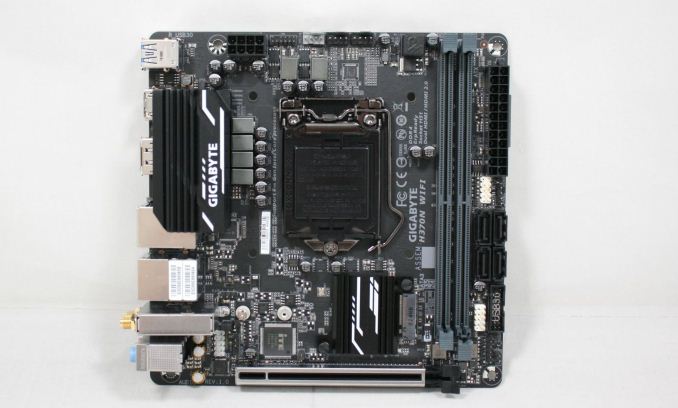
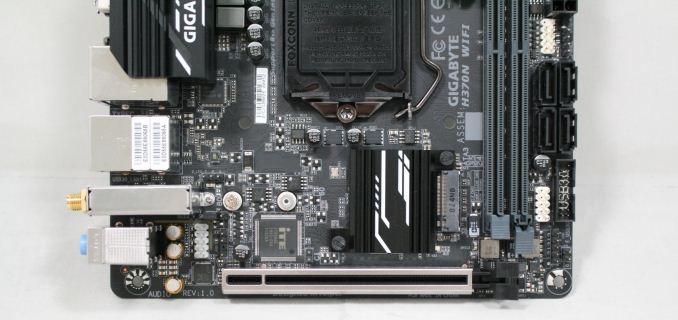
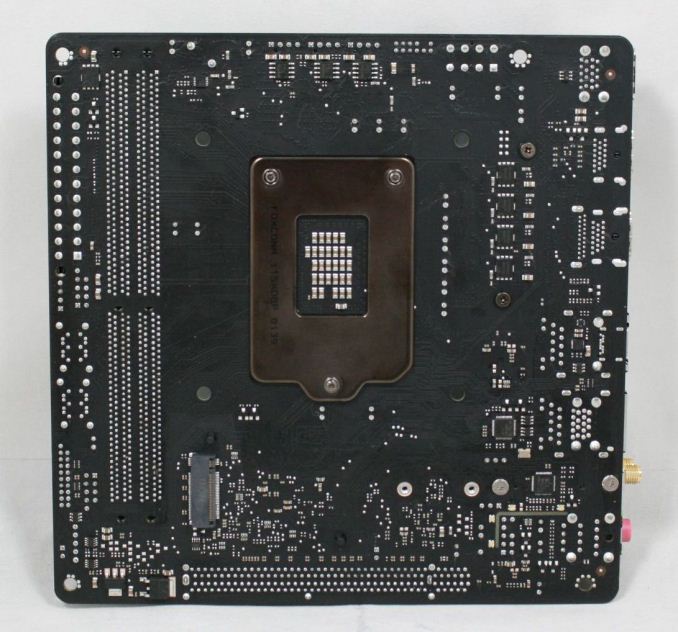
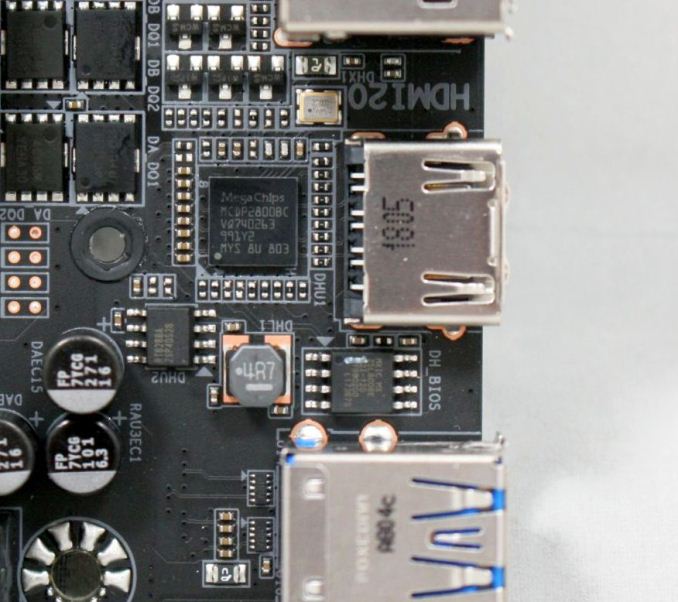
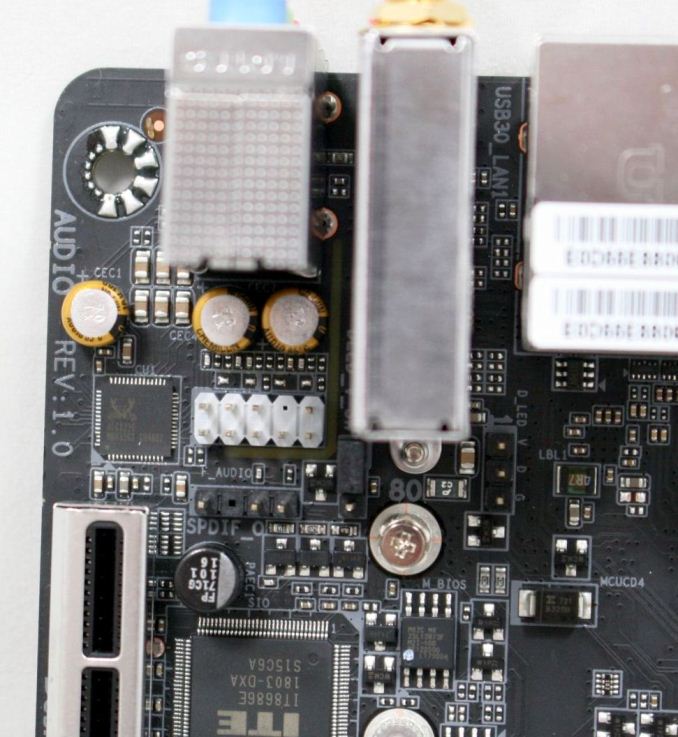
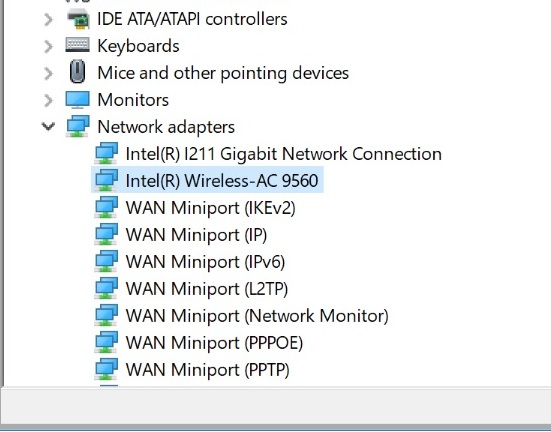

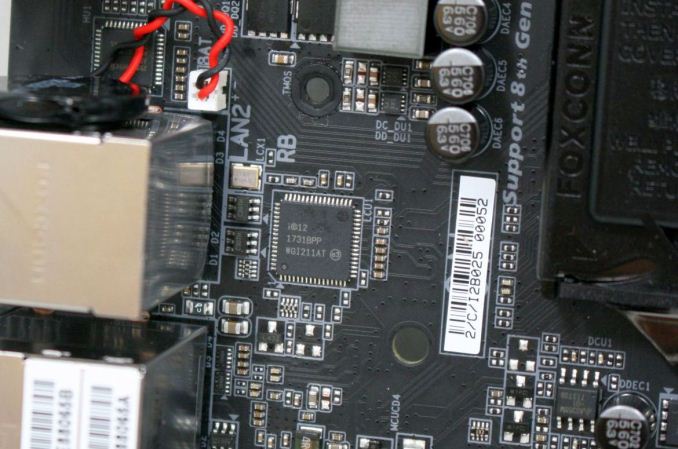

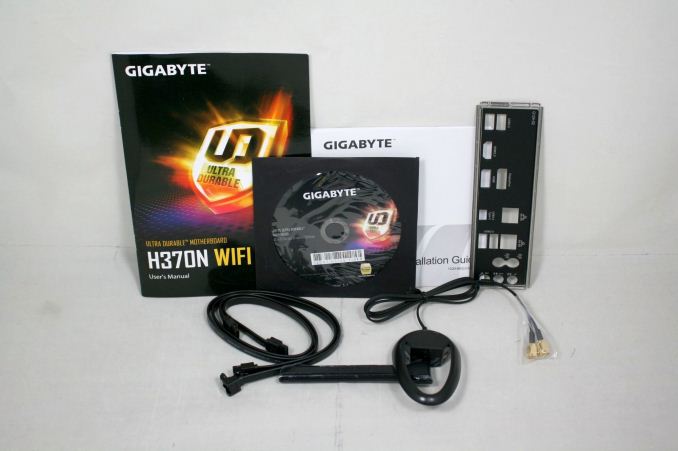














123 Comments
View All Comments
HStewart - Saturday, April 7, 2018 - link
"It took a few years before big programs like Photoshop had native Mac Intel ports."Wrong... Photoshop originally was created on Mac and later ported to Windows.
https://en.wikipedia.org/wiki/Adobe_Photoshop#Earl...
ARM MacBook would have many challenges - it would also have to be able to run Windows programs and more importantly able to recompile applications for OS on the same machine.
Apple has rumors of attempting an ARM based Mac - but so far ARM is using in display controllers for 5K screens and in iOS products. Apples wants people to believe that iPad Pro's are PC replacements - but they no more that glorified iPad's. The new iPad is good example of this and has same Apple Pencil and probably faster that original iPad Pro.
serendip - Sunday, April 8, 2018 - link
I remember using Photoshop on the first Intel Macbook in 2006, it was translated from PowerPC code using Rosetta. This was in OS X, not Windows. The OS X Intel (Universal) port arrived two years later. The translated version was surprisingly bearable to use on a Macbook even when compared to the PowerPC native port running on a top-spec G4 Powerbook.Rosetta saved the translated code so it wouldn't be so slow on subsequent running. Apple could do the same thing to get OS X Intel code working on an ARM Macbook, just like what Qualcomm and Microsoft are doing on Windows Snapdragon PCs.
As for coding, Xcode has iOS ARM targets so adding a MacOS ARM variant shouldn't be difficult. I'm not sure about Windows on ARM Macbooks though. Apple might be willing to drive away that user segment because it's so small and niche.
FunBunny2 - Tuesday, April 3, 2018 - link
"A non Intel based Mac will never replace high end mac"again. they've been on 3 processors so far.
HStewart - Saturday, April 7, 2018 - link
I believe Apple makes it's announcements in June They would be foolish not to release the 6 core mobile MacBook Pro update - they would not wanted to compete with new Windows notebooks using 6 cores.On the Apple move for own CPU, I think it only going release in low end Mac line if so - possible in the iOS line. Apple has always blindly want people to believe iPad Pro are desktop replacements - but until those devices can actually successfully run the Mac development tools that allow developers to create iOS applications, Apple is dream - in any ask espected processing power is expected to be very limited.
Another big concern that Mac line has to live with Windows compatibily - Mac are good for limited purpose - which Apple has been very good at - primary in schools - but also in graphics industry but that is no longer the case. There are other options - especially in schools.
Tyler_Durden_83 - Tuesday, April 3, 2018 - link
Which sku do you think will power the next nucs (the normal ones, not the gaming oriented hades canyon ofc).TheBestPessimist - Tuesday, April 3, 2018 - link
+1 i'd love to know that as well.abrowne1993 - Tuesday, April 3, 2018 - link
I don't understand the designation of certain chips as i3, i5, i7, i9 on mobile recently. At least on desktop you can immediately identify how many cores and threads they have (outside of HEDT). It seems so arbitrary on mobile now.DanNeely - Tuesday, April 3, 2018 - link
It's always been a lot more arbitrary on mobile with significant spec differences at each branding level depending on the TDP.edzieba - Tuesday, April 3, 2018 - link
Absence of Z390 is interesting, many were expecting that alongside the H/Q/B PCHs.FunBunny2 - Tuesday, April 3, 2018 - link
they really ought to come up with a different name. this one is a mashup of ancient IBM Big Iron. not, I'd wager, the image they seek.